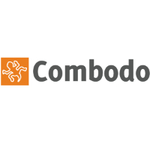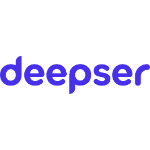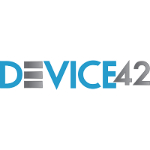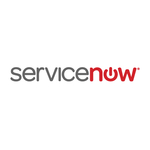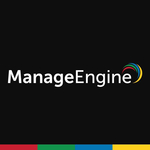TechnologyCounter provides genuine, unbiased real user reviews to help buyers make informed decisions. We may earn a referral fee when you purchase through our links, at no extra cost to you.
List of Best CMDB Software
Showing 1 - 10 of 10 productsITOP is a solution for businesses looking to streamline their day-to-day operations. With user-friendly features and top-notch functionality, ITOP offers a seamless experience for managing tasks, projects, and teams. Say goodbye to complicated proces...Read ITOP Reviews
Deepser is a software designed to revolutionize your business operations. With its advanced features and user-friendly interface, Deepser streamlines tasks, improves efficiency, and enhances collaboration. Say goodbye to hassle and hello to seamless...Read Deepser Reviews
Established as is a solution for managing and automating IT infrastructure, Device42 is a software that simplifies complex IT processes. With its intuitive user interface and robust features, Device42 has become the go-to tool for streamlining infras...Read Device42 Reviews
Cherwell is a versatile and dynamic software designed to streamline and enhance your organizational processes. Its intuitive interface and robust features make it a powerful tool for optimizing efficiency and productivity. With Cherwell, managing com...Read Cherwell Reviews
ServiceNow CMDB (Configuration Management Database) is a software that brings order and efficiency to the management of IT assets and services. It allows organizations to maintain an accurate and up-to-date record of all their configuration items and...Read ServiceNow CMDB Reviews
i-doit pro is a solution for your organizations IT asset management. With streamlined processes, detailed documentation, and user-friendly features, i-doit pro simplifies the management of your IT infrastructure. Empower your team to make informed de...Read i-doit pro Reviews
Virima is a leading software solution for all your IT needs. Streamline your processes and optimize your operations with our innovative technology. From asset management to automation, Virima is a tool for modern businesses. Say goodbye to complicate...Read Virima Reviews
Zenoss is a IT monitoring and management software that takes a holistic approach to overseeing your entire technology stack. With its user-friendly interface automation, Zenoss allows businesses to proactively monitor their systems for potential issu...Read Zenoss Reviews
CMW Tracker the ultimate asset for seamless project management. With our state-of-the-art tracking software, you can take charge of every aspect of your project, from task delegation to progress monitoring. Say goodbye to missed deadlines and disorga...Read CMW Tracker Reviews
ServiceDesk Plus is an AI-driven Unified Service Management platform, built to streamline and automate service delivery operations for both IT and non-IT departments, through visual workflows, predictive and generative AI capabilities, and out-of-the...Read ManageEngine ServiceDesk Plus Reviews
- What Is CMDB Software?
- Top Reasons Why Businesses Need CMDB Software?
- What Are the Top Key Features of CMDB Software?
- What Are the Top Benefits of CMDB Software?
- What Are the Steps to Choose the Right CMDB Software?
- What Are the Types of CMDB Software for Different Industries?
- What Are the Technology Trends for Best CMDB Software?
- What Are the Deployment Options for CMDB Software?
What Is CMDB Software?
The utilization of configuration management database software is a crucial component in the provision of information technology services. The purpose of this system is to retain comprehensive data pertaining to an organization's information technology services, infrastructure, assets, and configuration items.
This facilitates an organization in strategizing and overseeing its resources with optimal effectiveness. The web-based CMDB software consists of a compilation of configuration items (CI) that serve as representations of various IT entities inside an organization.
For instance, the configuration items (CIs) encompass a range of components such as servers, software applications, networks, databases, and storage devices. Every Configuration Item (CI) encompasses attributes that are associated with the specific item, such as its name, version, location, and installation date.
The best CMDB tools have the purpose of maintaining a comprehensive record of modifications made to the information technology (IT) infrastructure and services. It facilitates the monitoring of availability and performance, as well as the identification of vulnerabilities within the IT ecosystem of the company.
Additionally, it can be utilized to promptly evaluate the effects of modifications made to the system by swiftly examining the configuration of every individual component within the network.
The CMDB software is capable of integrating with many management systems, such as network monitoring programs, in order to deliver up-to-date and precise information regarding the present condition of IT resources.
Additionally, it facilitates improved cost management through the provision of data regarding the individuals who possess the authorization to utilize specific Configuration Items (CIs) and the corresponding financial implications for the firm.
In general, web-based CMDB software serves as a valuable tool in the management of an organization's IT resources, effectively mitigating possible IT difficulties proactively.
Top Reasons Why Businesses Need CMDB Software?
1. Centralized Storage: Web-based CMDB software facilitates the consolidation of essential asset records, encompassing hardware, software, facilities information, and supplier inventories, into a unified and centralized storage system.
2. Relationship Mapping: Configuration Management Databases (CMDBs) possess the ability to visually represent the interconnectedness of assets, customers, and services.
3. Automation: Configuration Management Databases (CMDBs) possess the ability to visually represent the interconnectedness of assets, customers, and services.
4. Change Management: Configuration Management Databases (CMDBs) provide the capability to automate the process of capturing asset information, hence eliminating the need for enterprises to allocate resources towards human data entry.
5. Configuration Tracking: Configuration Management Databases (CMDBs) provide a precise and up-to-date record of assets.
6. Governance & Compliance: Configuration Management Databases (CMDBs) serve as a vital tool for organizations to effectively achieve and maintain compliance with governmental and industry requirements pertaining to information technology (IT).
7. Cost Reduction: Configuration Management Databases (CMDBs) facilitate enhanced utilization of IT resources, resulting in financial benefits through reduced costs.
8. Availability & Performance Monitoring: Configuration Management Databases (CMDBs) has the capability to effectively monitor the availability and performance of both real and virtual assets.
9. Service Level Monitoring: Configuration Management Databases (CMDBs) has the capability to identify instances where service levels are deteriorating and afterwards initiate proactive measures to rectify the situation.
10. Security: Configuration Management Databases (CMDBs) possess the capability to ascertain and administer security concerns, alongside evaluating the efficacy of security procedures.
11. Error Prevention & Troubleshooting: Configuration Management Databases (CMDBs) have the potential to mitigate errors arising from the presence of erroneous information, while also streamlining troubleshooting procedures.
12. Strategic IT Planning: Configuration Management Databases (CMDBs) possess the capability to offer valuable insights on the present condition of an environment, hence facilitating informed decision-making in strategic IT planning endeavors.
13. Decision Support: Configuration Management Databases (CMDBs) have the potential to effectively minimize the duration required for doing research and analyzing data, hence facilitating the decision-making process.
14. Knowledge Base: Configuration Management Databases (CMDBs) possess the capability to readily furnish a repository of knowledge encompassing a diverse range of subjects pertaining to information technology.
15. Increased Efficiency: Configuration Management Databases (CMDBs) have the potential to enhance the operational efficiency of IT departments and mitigate the financial burden associated with IT operations.
What Are the Top Key Features of CMDB Software?
1. Automated Discovery: CMDB software facilitates the automated identification of IT systems and applications, enabling IT teams to promptly ascertain the dimensions, extent, and nature of their IT infrastructure.
2. Configurations: The best CMDB tools are designed to effectively store and categorize various settings pertaining to IT systems and applications, encompassing hardware, software, and networking components.
3. Asset Management: The web-based CMDB software is designed to monitor and manage critical IT assets, including routers, switches, desktops, laptops, phones, and various other devices.
4. Software & Service Mapping: The CMDB systems are designed to create a comprehensive mapping of all software and services that are installed within an IT system. This facilitates the identification of dependencies and clients associated with each product or service by IT teams.
5. Change Management: Top CMDB tools facilitate the monitoring and documentation of modifications made to IT setups by IT teams, enabling them to assess the potential effects of these changes on the overall stability of the system.
6. Auditing & Reporting: The use of Configuration Management Database tools empowers IT teams to generate comprehensive auditing reports and effectively monitor alterations made to the IT configuration over a given period.
This facilitates the assurance that all modifications adhere to the established policies of the organization.
7. Data Security: The best CMDB tools has security measures aimed at safeguarding sensitive information included within the CMDB.
8. Cross-Platform Compatibility: The CMDB software has been specifically developed to ensure compatibility across many platforms, enabling IT professionals to effectively oversee and administer their IT infrastructure through a centralized system.
What Are the Top Benefits of CMDB Software?
The top benefits of CMDB software include:
1. Improved asset tracking: The utilization of the best CMDB tools enables users to effectively monitor and manage critical assets, including hardware, software, services, and other components, through a unified and centralized platform. This facilitates comprehensive insight over the entirety of the infrastructure.
2. Improved system monitoring: CMDB systems has the capability to offer real-time data for enhanced system and security monitoring by effectively monitoring system changes over a period of time.
3. Streamlined change management: The utilization of Configuration Management Database tools facilitates the storage and dissemination of data pertaining to modifications made to an enterprise's information technology infrastructure, hence enhancing the efficacy of change management procedures.
4. Automated service lifecycle management: CMDB software is utilized for the purpose of monitoring and overseeing the entire lifecycle of hardware and software assets, encompassing various stages such as acquisition, implementation, upkeep, and retirement.
5. Robust help desk operations: Through the utilization of the data included inside Configuration Management Database software, IT help desk employees are able to efficiently address customer concerns, while also monitoring and examining trends within customer care inquiries and ticket backlogs.
6. Enhanced incident investigation: The CMDB systems plays a crucial role in incident investigation and resolution by monitoring and documenting IT asset settings, hence providing necessary information.
7. Improved regulatory compliance: CMDB software facilitates a comprehensive examination of an organization's IT infrastructure and its corresponding components, hence assisting enterprises in achieving regulatory and industry requirements to enhance compliance.
What Are the Steps to Choose the Right CMDB Software?
1. Define your service portfolio: Please provide a comprehensive overview of the services offered by your firm, as well as the corresponding functions and features that these services necessitate.
2. Establish CMDB Requirements: Determine the necessary assets, configuration objects, and attributes that must be monitored within the CMDB software.
3. Research Potential Solutions: Conduct a comprehensive investigation of the currently accessible Configuration Management Database software solutions in order to ascertain the most suitable choice that aligns with the specified requirements.
4. Test the Software: It is vital to ascertain that prospective Configuration Management Database tools adequately meet the specified requirement by establishing a live environment for software testing purposes.
5. Make a Decision: Select the configuration management database software solution that most effectively aligns with the specific needs and demands of the organization.
6. Train and Implement: Facilitate the training of personnel in the utilization of the software and integrate the selected configuration management database tools into the operational frameworks and procedures of the company.
What Are the Types of CMDB Software for Different Industries?
Please paraphrase the user's text in an academic manner. The selection of configuration management database software is contingent upon the characteristics of a business, including its size and industry.
In a broad sense, there exist three primary categories of Configuration Management Database tools that cater to diverse industries: proprietary systems, open-source software, and cloud-based solutions.
Proprietary configuration management database tools are frequently tailored to meet the needs of larger enterprises that want a comprehensive and hierarchical framework for monitoring and modifying configurations. The top CMDB tools encompass the utilization of exclusive scripts and commands to govern the functionalities of change management and service management.
Open-source configuration management database software is well-suited for small-scale enterprises that do not necessitate extensive or intricate systems. The best CMDB tools are accessible in the form of open-source software, implying that the source code is openly available to the public, enabling organizations to tailor the system according to their individual requirements.
Cloud-based Configuration Management Database tools are commonly employed by larger companies that possess a substantial volume of data requiring effective management. The aforementioned solutions are deployed on cloud infrastructure and leverage software as a service (SaaS) technologies to facilitate the management and monitoring of configurations within businesses.
The CMDB systems are specifically engineered to possess a great degree of scalability, rendering them well-suited for enterprises that necessitate efficient and effortless retrieval and modification of extensive databases.
What Are the Technology Trends for Best CMDB Software?
The technology trends for best cmdb software are as follows:
1. Automation: Automation is a significant and prevalent phenomenon in Configuration Management Database software , as it facilitates the seamless synchronization of data in real-time and enables the execution of batch modifications as required.
Automation plays a crucial role in mitigating manual errors and expediting the integration of novel features and procedures.
2. Artificial Intelligence (AI): Artificial intelligence (AI) plays a significant role in automating several manual activities within the configuration management database tools. These procedures include data validations, change management, configurations, and asset scheduling.
Additionally, this functionality allows the software to acquire knowledge from the data it processes and enhance its performance progressively.
3. Enhanced Security: In light of the escalating complexity of cyber threats, it is imperative to prioritize the inclusion of advanced security capabilities within any CMDB systems.
The aforementioned characteristics encompass enhanced authentication processes, data encryption mechanisms, as well as intrusion prevention and detection systems.
4. Flexible Architecture: The utilization of cmDB software is prevalent among enterprises of diverse sizes and across numerous industries. In this context, the significance of possessing a flexible and scalable architecture inside the software cannot be overstated. This feature enables an organization to tailor the top CMDB tools according to its specific requirements.
What Are the Deployment Options for CMDB Software?
There are several deployment options for CMDB software, which include:
1) On premise or in-house: This particular deployment method enables the company to install and oversee it within their own premises.
Utilizing this approach can prove to be a highly effective alternative, particularly in cases where the firm possesses pre-existing information technology infrastructure and possesses the requisite knowledge and skills to effectively uphold and manage the system.
2) Cloud: Cloud-based CMDB software solutions provide equivalent capabilities and functionalities to those of an on-premise solution, albeit with the distinction of being hosted on a web-based server. This alternative provides a cost-efficient solution that facilitates the conservation of both time and energy resources.
3) Hybrid: A hybrid CMDB systems integrate both cloud-based and on-premise systems. Organizations can leverage the advantages of cloud computing while retaining control over sensitive data.
4) Mobile: Mobile CMDB systems enable enterprises to effectively monitor and manage assets and data in a location-independent manner.
The top CMDB tools are a highly advantageous choice for firms that possess geographically dispersed teams or engage in commercial operations necessitating the monitoring and management of assets across multiple locations.
